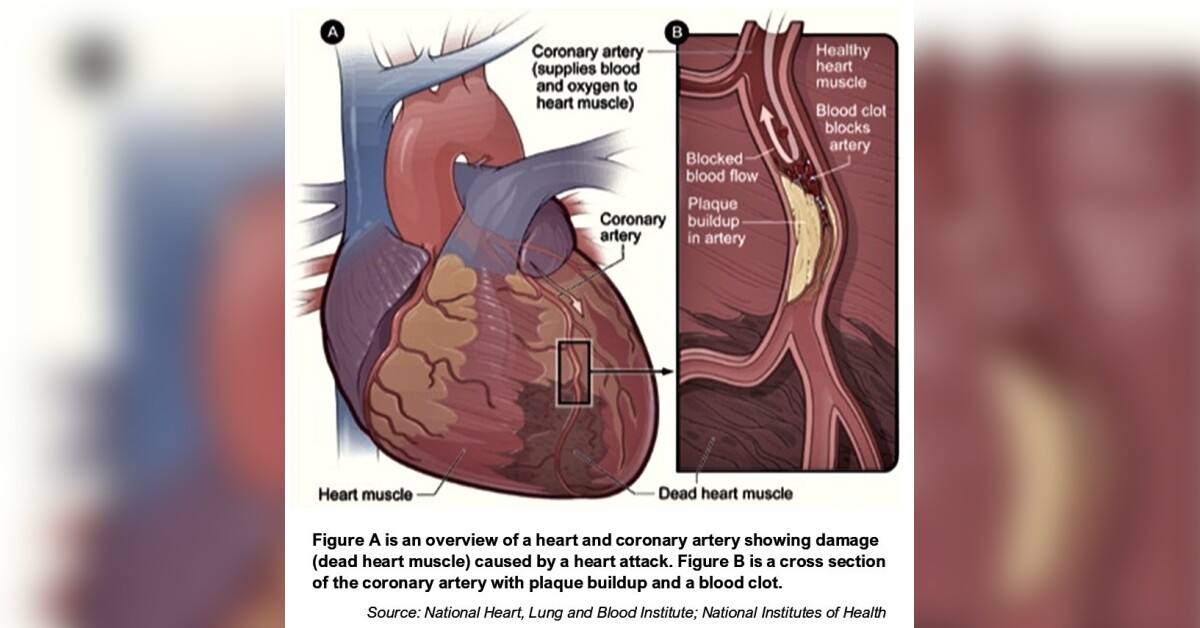February, not suprisingly, is American Heart Month. The human heart is about the size of a clenched fist and weighs between 8 and 12 ounces, depending on gender and body size. Heart disease is the leading cause of death in the United States, killing more than 600,000 Americans each year. That’s one out of every four deaths.
There are many types of heart disease – from rhythm disorders to genetic defects to valve conditions to blood vessel diseases. But this blog will focus on the most common type: coronary artery disease, or CAD.
CAD is very common in this country. More than 18 million adult Americans suffer with it. According to the Cleveland Clinic, that’s roughly the combined populations of New York City, Los Angeles, Chicago and Houston.
The coronary arteries are blood vessels that wrap around the outside of the heart and supply it with oxygen-enriched blood and nutrients. With CAD, the coronary arteries become narrowed by a buildup of plaque, which is made up of fat, cholesterol and other substances floating around in your blood. This process of plaque buildup in the arteries is called atherosclerosis.

Atherosclerosis occurs over many years, and you may experience no symptoms while it is happening. But as your arteries become increasingly narrow, you may begin to notice symptoms such as pressure or tightness in your chest (angina), shortness of breath and fatigue.
The buildup of plaque in coronary arteries can eventually block the flow of blood to the heart, leading to a heart attack. Symptoms of a heart attack include chest pain or discomfort; feeling weak, lightheaded or faint; pain or discomfort in the jaw, neck or back; pain or discomfort in one or both arms or shoulders; and shortness of breath.
If you experience these symptoms, seek medical help right away.
Over time, CAD can weaken your heart and cause complications such as heart failure, a condition in which your heart can no longer pump blood efficiently; abnormal heart rhythms; and cardiac arrest, the sudden and unexpected loss of heart function.
There are multiple risk factors for CAD, some you can’t control and some you can. Risk factors you can’t control include age. Men face a higher risk after age 45, and women are at a higher risk after age 55. Another uncontrollable risk factor is family history. Your risk increases if one of your family members has heart disease.
Risk factors you can control include being overweight and physically inactive, eating an unhealthy diet that is high in saturated fat and complex carbohydrates, smoking, and drinking more alcohol than is recommended.
If you’re at high risk for CAD or already have symptoms, your doctor may recommend one or more tests to assess your heart function and make a diagnosis. These tests include:
• Electrocardiogram, which records your heart’s electrical activity.
• Echocardiogram, which uses sound waves to evaluate your heart’s structure and function.
• Exercise stress test, which evaluates how your heart responds to vigorous activity.
• Cardiac catheterization, which involves inserting tubes into your coronary arteries to view the plaque and confirm CAD.
The first step in treating CAD is making positive changes to your lifestyle. Don’t smoke, eat a heart-healthy diet, exercise for 30 minutes most days of the week, limit your alcohol intake, get seven to nine hours of sleep a night and work to control any chronic conditions you may have, such as high blood pressure, high cholesterol and diabetes.
Some people need a procedure or surgery to treat their CAD. Coronary angioplasty is an interventional procedure in which a small balloon is used to widen your narrowed coronary arteries. Your doctor may place small mesh tubes called stents to help keep the arteries open.
Coronary artery bypass grafting (CABG) is a surgery that takes a blood vessel from another part of your body and attaches it to the coronary artery above and below the narrowed area or blockage. This “bypass” restores blood flow to your heart.
CAD can’t always be prevented because some of its risk factors are out of your control. But the positive lifestyle changes used to treat the disease can also be used to lower your risk.





Leave a Reply